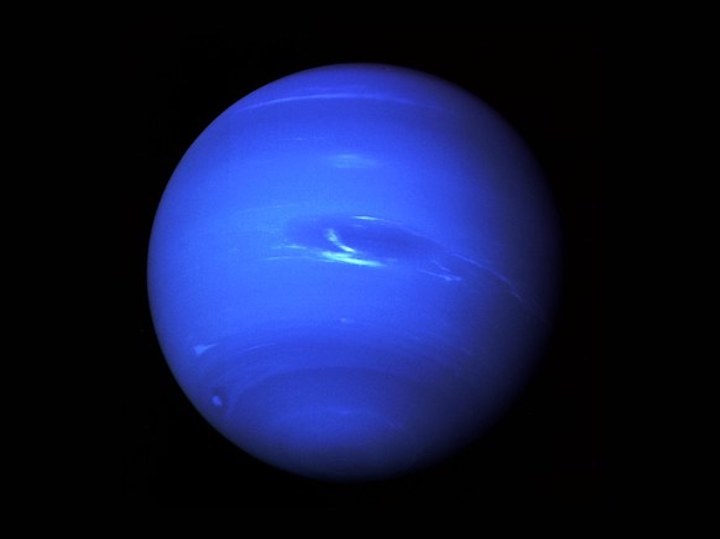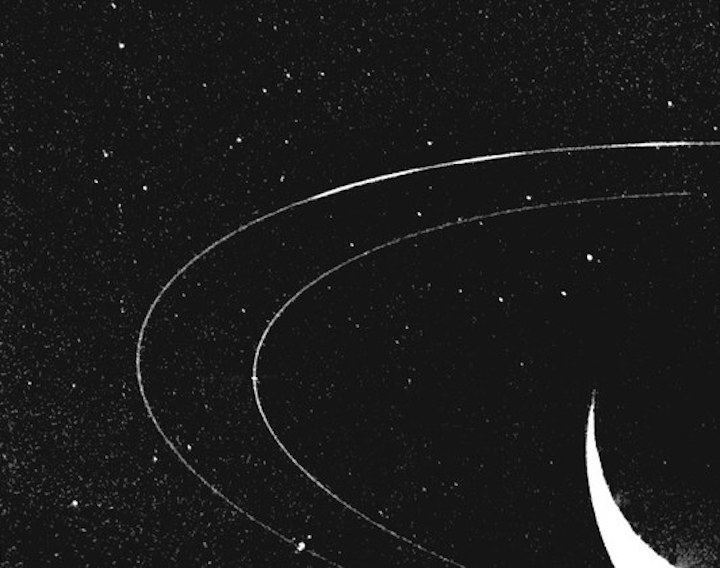19.06.2019

IT WAS JUST after midnight at mission control center at NASA’s Jet Propulsion Laboratory, and Carl Sagan was exuberant. The Voyager 2 spacecraft had just completed its decade-long mission by making its closest pass to Neptune, before continuing on into interstellar space. It was the first—and so far only—spacecraft to visit the mysterious blue ice giant lurking at the edge of the solar system.
“We are looking at the frontier of the solar system, the last planet,” Sagan told a CNN television crew that had assembled for the occasion. “The level of excitement is the highest I’ve ever seen here.”
Before Voyager 2 made its pass just 3,000 miles above Neptune's atmosphere on August 25, 1989, scientists knew next to nothing about the place. What they found was a planet covered in dense, methane-rich clouds that whipped around Neptune at more than 1,000 miles per hour, making it the windiest spot in the solar system. At the time, the planet was host to the Great Dark Spot, an Earth-sized storm that has since disappeared. Voyager also got a good look at Triton, Neptune’s largest moon, and saw geysers erupting from its surface. This suggested it was tectonically active and perhaps host to a vast subsurface ocean. In addition to Triton, Voyager 2 also found six other moons and four lumpy rings circling the planet.

Voyager 2 captured this image of Neptune's outermost ring, located 39,000 miles out.
Voyager’s encounter with Neptune raised as many questions as it answered. But in the 30 years since, NASA hasn’t been back. Data from the Kepler Space Telescope suggests that ice giants like Neptune and Uranus are among the most abundant planets in our galaxy, which makes a strong case for a visit. Returning to Neptune could drastically improve our understanding of planetary formation and dynamics, but the window for organizing such a mission is rapidly closing.
Roughly every 12 years, the planets align in such a way that a Neptune-bound spacecraft launched from Earth can get a gravity assist from Jupiter, which helps shave the travel time down to about 12 years. The window for a Jupiter gravity assist only lasts for a couple of years, and the next one opens in the late 2020s. The problem, says Mark Hofstadter, a planetary scientist at the Jet Propulsion Laboratory, is that pulling together a flagship planetary exploration mission usually takes about a decade. That means that if NASA wants to hit the next gravity assist window, planning a Neptune mission needed to start yesterday.
Hofstadter says an ideal flagship mission to Neptune would consist of a large spacecraft carrying at least 10 scientific instruments and an atmospheric probe. These instruments would be used to answer a number of fundamental questions about Neptune. At present, he notes that scientists think that the bulk of Neptune’s mass is water, but they’re far from certain. Furthermore, Neptune defies our best models of planetary formation. Based on these models, which accurately reproduce the formation of all the other planets, Neptune and Uranus should have ballooned in size like the gas giants Jupiter and Saturn. But they didn’t—and scientists are at a loss to explain why.
“Right now we're in a situation where we recognize that these ice giants are kind of weird, but we don't understand what they're made of, how they're put together, or why they even exist,” Hofstadter says. “Yet they are everywhere we look in our galaxy, so learning some of these fundamental things is really going to advance our big-picture understanding of how planets form and evolve.”
Hofstadter has hope that a return mission to Neptune is feasible in the next decade. In 2017, he coauthored a reportthat detailed various mission proposals to Neptune and Uranus. The report will help inform NASA’s next planetary science decadal survey, which determines the agency’s exploration priorities for the coming decade. Work on the decadal survey will begin next year and will likely be finished sometime in 2021 or 2022. But even if a flagship mission to Neptune is selected as a priority and receives the necessary funding, by the time the decadal survey is finished it would take a Herculean effort to pull the mission together in time to hit the gravity assist window.
In light of this dilemma, some planetary scientists have already started discussing what a flagship mission to the outer solar system might look like, so that if the decadal survey green-lights a mission to an ice giant, they can start working on it immediately. A particularly tantalizing plan, according to Hofstadter, involves a collaborative mission between NASA and the European Space Agency. In January, the ESA completed a study of ways it could contribute to a NASA-led mission to the ice giants, such as creating a probe, a sister spacecraft to enable the exploration of Neptune andUranus, or a lander for Triton. “We’ve started drilling into the details,” Hofstadter says, but whether NASA ends up buying into the ESA’s plan will depend on the results of the decadal survey.
Given the time crunch, Hofstadter says it’s also worth considering smaller mission profiles. Louise Prockter, the director of the Lunar and Planetary Science Institute, couldn’t agree more. In March, Prockter and her colleagues unveiled their plans for Trident, a flyby mission to Neptune’s moon Triton that would launch in 2026 and fly by the moon in 2038.
Prockter describes Triton as the solar system’s “forgotten moon.” This is unfortunate, she says, because Triton is quite unlike any other planetary body in the solar system. Many scientists think that the moon is actually from the Kuiper belt, a massive field of objects from the early solar system that lies beyond Neptune, and became trapped in the planet’s orbit. Based on data from Voyager 2, it also seems to be geologically active, and there’s evidence it may support a vast ocean beneath its surface. Its ionosphere is also 10 times more intense than any other ionosphere in the solar system, which is hard to explain because ionospheric activity is usually correlated with a planet’s interaction with the solar wind, and Triton is rather far from the Sun.
Trident would spend approximately 10 days flying through the area around Neptune, during which it would map nearly all of Triton, study its geysers, determine whether it harbored an ocean, and fly within 300 kilometers of the moon’s “bizarre” surface to study its ionosphere. She says the mission could be accomplished with about $500 million, well under the cost of flagship missions, which tend to start around $1 billion. “We're trying to do something bold that no one thought could be done,” Prockter says.
In July, Prockter will submit the Trident proposal for consideration as part of NASA’s Discovery program. If it gets approved, Trident’s arrival at Triton will almost perfectly coincide with the 50th anniversary of Voyager’s visit.
Justifying large planetary missions is always tough, and the timescales involved with missions to the outer solar system only increase the burden on the scientists who make the case for them. The thing about space exploration, though, is that the most exciting discoveries are rarely anticipated in advance. There is plenty of known science to be done on Neptune, but we’ll never know what we’re missing until we get there.
Quelle: WIRED
